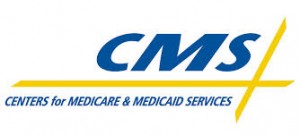 Marilyn Tavenner, administrator of the Centers for Medicare and Medicaid Services (CMS), has been on the hot seat lately, in congressional hearings over the troubled Healthcare.gov website. But overseeing much of the Affordable Care Act implementation is only one responsibility of the sprawling CMS, a branch of the Department of Health and Human Services (HHS). Other major components of the CMS include administering Medicare, partnering with states to administer Medicaid and the Children’s Health Insurance Program (CHIP), and maintaining quality standards at long-term care facilities and clinical laboratories. About 1400 of the agency’s 4,100 employees are located at the HHS headquarters in the Hubert H. Humphrey Building in Washington, D.C., and in 10 regional offices around the country. About 2700 employees work at the 57-acre CMS campus in Woodlawn, Maryland. Four interconnected buildings cover a combined 937,170 square feet, housing office and warehouse space and a 24-hour Automated Data Processing Center.
Marilyn Tavenner, administrator of the Centers for Medicare and Medicaid Services (CMS), has been on the hot seat lately, in congressional hearings over the troubled Healthcare.gov website. But overseeing much of the Affordable Care Act implementation is only one responsibility of the sprawling CMS, a branch of the Department of Health and Human Services (HHS). Other major components of the CMS include administering Medicare, partnering with states to administer Medicaid and the Children’s Health Insurance Program (CHIP), and maintaining quality standards at long-term care facilities and clinical laboratories. About 1400 of the agency’s 4,100 employees are located at the HHS headquarters in the Hubert H. Humphrey Building in Washington, D.C., and in 10 regional offices around the country. About 2700 employees work at the 57-acre CMS campus in Woodlawn, Maryland. Four interconnected buildings cover a combined 937,170 square feet, housing office and warehouse space and a 24-hour Automated Data Processing Center.
Built in 1995, the facility recently received an energy efficiency overhaul courtesy of the General Services Administration (GSA). Improvements include high efficiency boilers and chillers, high performance lighting, an Energy Star cool roof coating and solar panels on the existing roof and on new covered walkways. The extensive photovoltaic arrays are among the GSA’s 5 largest PV installations, producing excess energy that earns solar renewable energy credits. The GSA sells the credits to the local utility and expects to earn $150,000–$200,000 each year.
The history of the CMS traces back to 1965, when Lyndon Johnson signed the Social Security Act, creating Medicare and Medicaid. Both health care programs were coordinated by separate agencies within the Department of Health, Education and Welfare (HEW). In 1977, the Health Care Financing Administration (HCFA) was created to administer both Medicare and Medicaid, still under HEW. The HCFA offices were established on the Social Security Administration’s (SSA) Woodlawn, Maryland, campus because many staff members came from the SSA. In 1980, HEW was split into the Department of Education and HHS, and HCFA as well as SSA became part of HHS. In 2001, HCFA was renamed the Centers for Medicare and Medicaid Services. Responsibilities of the CMS have grown significantly in the past decade, fueled by the 2003 addition of Medicare prescription drug benefits, expanded CHIP in 2009 and consumer protections and private health insurance provisions of the Affordable Care Act in 2011.
As the agency’s purview has expanded, so have its political complications. Marilyn Tavenner is the first CMS administrator confirmed by the Senate since Mark McClellan in 2004. Her predecessor, Donald Berwick, served 18 months after a 2010 recess appointment by President Obama but resigned in 2011 when Republican senators pledged to block his confirmation. A former nurse, hospital CEO and Secretary of Health and Human Resources for Virginia, Tavenner became acting administrator. Her 35-year health care career resulted in bipartisan support even from Orin Hatch (R-UT) and other Affordable Care Act critics. Tavenner was confirmed as administrator by a 91–7 vote last May.
At her confirmation hearing before the Senate Finance Committee, Tavenner emphasized the need to communicate openly and often with congress. Calling CMS an “$820 billion dollar business,” she applauded recent accomplishments such as maintaining timely payment of more than $1 billion daily for Medicare claims, improved care quality as reflected by reduced Medicare hospital readmissions, streamlined regulations and enhanced data access especially for rural providers. Increased efforts to reduce waste, fraud and abuse in FY 2012 led to recovery of $4.2 billion from attempts to defraud heath care programs. She also identified top priorities for the CMS, including the establishment of Affordable Care Act-mandated health insurance marketplaces and consumer protections and reducing health care costs and delivery through innovative care models, enhanced tools to combat fraud and payment strategies connected to health care performance.
Tavenner was the first administration official to apologize for the health care website issues. Even without ACA enrollees, the CMS is the nation’s largest health care purchaser, with almost 116 million beneficiaries. For the FY 2014 CMS budget, the administrator requested $5.2 billion for program management, an increase of $1.4 billion over FY 2012’s budget. Management costs are dwarfed by the costs of benefit outlays, expected to total $901.1 billion in FY 2014, not including ACA outlays. In a statement submitted with the budget request, Tavenner emphasized that the agency will continue to seek efficiencies and reduce fraud but that increased funding is essential. “Our resource needs are driven principally by workloads that grow annually,” said Tavenner, “and by our role in leading national efforts to improve efficiency, health care quality and access to care, not just for our traditional beneficiaries, but for all Americans.”
